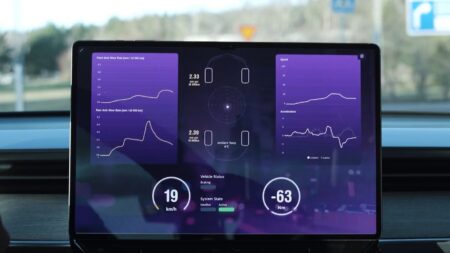As part of the European Union’s STEVE project, academics at the University of Surrey, based in Guildford, UK, have developed several ‘pioneering’ approaches to torque vectoring in electric vehicles. STEVE is the ‘Smart-Tailored L-category Electric Vehicle demonstration in hEterogeneous urban use-cases’, a EUR 9.5 million European Commission project that brings together 20 partners from cities, industrial companies, small and medium enterprises, and academic institutions from seven European countries, for the demonstration of the integration of EL-Vs (electrified L-category vehicles) in the urban transport system.
E-vehicles with multiple motors can deliver different amounts of drive power to each wheel, which benefits power consumption, safety and driveability. However, the process of calculating and optimising the precise amount of power needed while the vehicle is in motion is complex, requiring detailed knowledge of the driving conditions ahead and powerful onboard computing resources to deliver the data in real-time – often making the techniques impractical for everyday vehicles.
The team from Surrey has revealed advanced methods to improve torque vectoring that can be implemented in consumer e-vehicles. For example, to improve the safety of e-vehicles, the team created a stability-control system that anticipates the curvature of the road ahead, allowing the car to pre-emptively brake if it approaches a bend too fast.
The university’s torque-vectoring system combines a predictive control model with fuzzy logic to adaptively prioritise vehicle dynamics or energy efficiency, depending on the driving conditions. The team says that their model, developed to simulate the way a vehicle is driven, using the so-called ‘pulse and glide’ approach to reduce energy consumption, is beneficial in EVs and is cost-effective enough to be implemented in future e-vehicles.
Professor Aldo Sorniotti, head of the Centre for Automotive Engineering at the University of Surrey said, “This has been an exciting project that has allowed us to make some major advances in powertrain control for electric vehicles. We believe that our work will allow new advanced torque-vectoring techniques to become useable in ordinary electric vehicles, delivering research that will directly assist drivers in the very near future.”
Riccardo Groppo, CEO of Ideas & Motion, one of the project partners, added, “The technical collaboration was fundamental to making progress on the inverter and control algorithm for the Light Electric Vehicle we developed. I think we have accomplished excellent results, setting the basis for further collaboration.”





